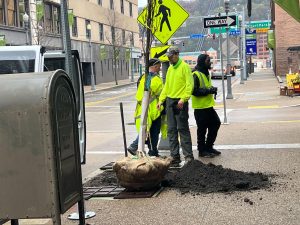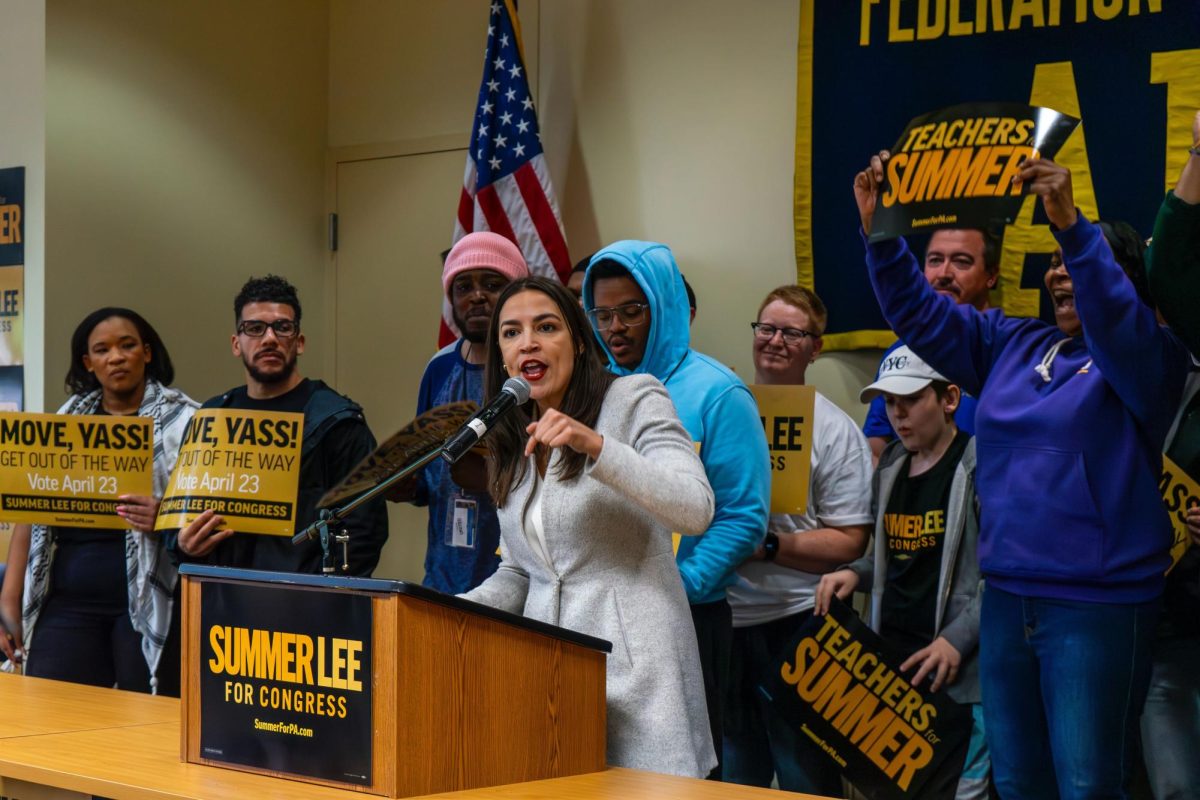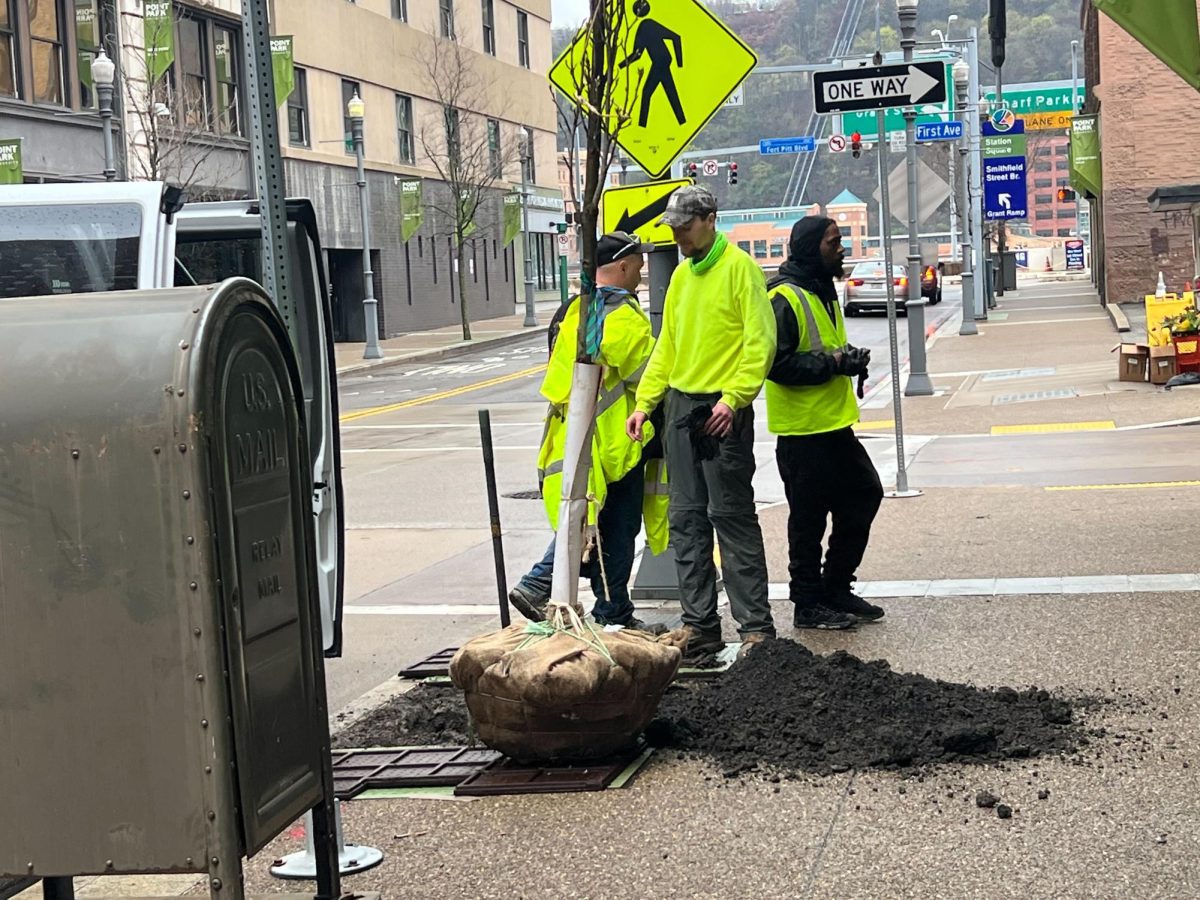Pieces of Mark Mattern’s childhood artwork still clutter the shelves of his basement. For years, he tried to recall his art teacher’s name, but to no avail. It was not until he attended an art exhibit featuring paintings of exonerated men at Point Park University that he remembered.
His teacher was Dan Bolick, the artist of “Resurrection after Exoneration,” the exhibit displayed in the lobby of Lawrence Hall. Mattern was a student in the inner-city art class that first inspired Bolick’s expressionist paintings. Frustrated with disrespectful students, Bolick created portraits of the children using vibrant acrylic paint. These “Angry Urban Youth” images were the first steps of a journey Bolick would take towards finding others cheated by society, wishing to capture that raw emotion they felt.
“I always thought back to that class, remembering the kids in it,” Mattern said. “I came here today and I thought he [Bolick] looked familiar, and it clicked. It’s weird; I feel it’s finally come full circle.”
When the city of Pittsburgh shut down 27 public schools to consolidate the students and educational facilities, one thing that went unnoticed was where the children in the merging schools were coming from.
“I had kids from Lincoln and Manchester in one class. There’s a lot of gang violence associated with those neighborhoods,” Bolick said. “I could no longer teach. It was all I could do to maintain order those last three years [in the classroom].”
Bolick retired from teaching, and the “Angry Urban Youth” paintings came to the attention of Barbara Jones, a member of the Association of Artists from Pittsburgh (AAP). She offered him a chance to create an exhibit. She gave him one-and-a-half years to create the artwork.
Since Bolick was no longer teaching, he found his creative muse stymied.
“I thought, ‘What am I going to paint? I’m not teaching these kids anymore,’” Bolick said.
He wanted to create more paintings depicting anger, as creating the portraits of the students proved to be “cathartic” for him.
Then, he got the idea to paint wrongfully incarcerated inmates who had been released from prison after their convictions had been reversed.
“I expected to see angry exonerees, so I could continue painting anger. It couldn’t have been further from that,” Bolick said.
Bolick contacted the Innocence Institute of Point Park, where Director Bill Moushey gave Bolick’s phone number to the men who were exonerated by the Institute. He waited months to hear from them, but only one man, Drew Whitley, contacted him.
Eventually, Bolick discovered a play written by three exonerated men in Louisiana, which was entitled “Voices of Innocence,” and the organization those men were members of, “Resurrection after Exoneration.” The program helped freed inmates learn life skills and cope with the injustice brought upon their lives.
An aspect of that therapy included outlets for emotion through art and writing.
“If they could turn their experiences into a play, into an art form, maybe they could turn it into paintings,” Bolick said.
For Bolick’s angry students, not all would channel that emotion in positive ways.
“They are stories of tremendous success and tremendous heartache,” Bolick said.
One is in prison for murder. Others, like Mattern, are the exception to the rule-one student plays football for Penn State, another received a full scholarship to the Art Institute of Chicago and yet another has received his doctorate and brought his family to Pittsburgh to view Bolick’s exhibit when it was on display at Westmoreland Art Museum in Greensburg, Pa.
“Art brings people together,” Bolick said.
Not only does art bring people together, but Bolick’s paintings are bringing awareness to a little-known cause.
Jack Holczer, a sophomore English major, said he was attracted to the paintings because of their bright coloring, but “wasn’t aware of their background” before hearing Bolick speak.
“I feel angry for [the exonerated men],” Holczer said. “I feel disgusted at the state and the incompetence and selfish nature of people.”
Bolick adamantly stated that the exhibit never would have been painted and the exonerated men never sought after had it not been for the students he taught.
“It all comes from my experience in the inner city,” Bolick said. “Had I not gone through that, I never would have gotten here.”
April 19‘Burgh Bites: Subway












